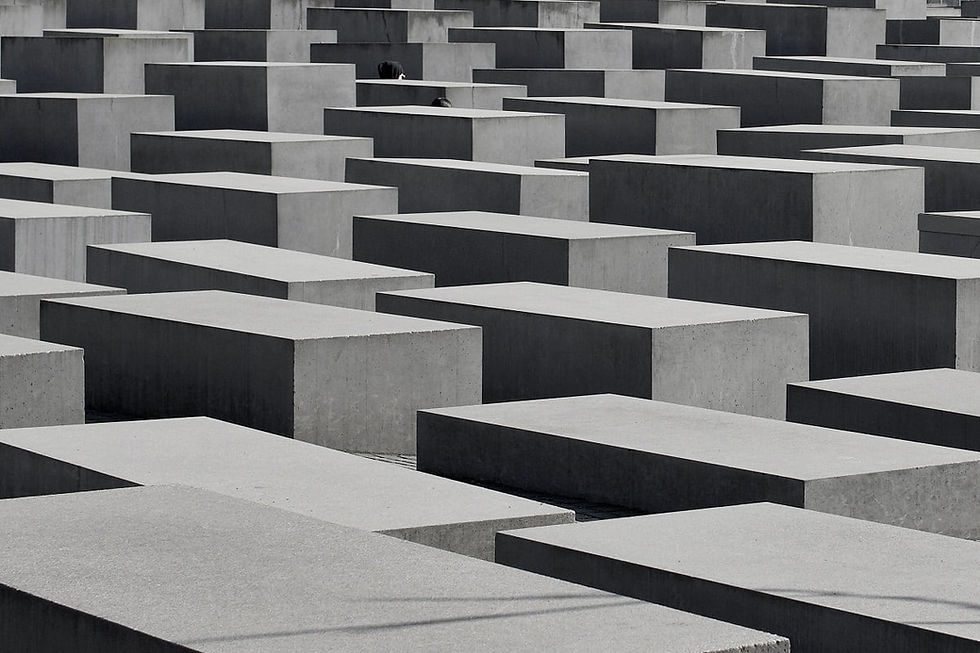Memorial to the Murdered Jews of Europe: Choice of Remembering
- Dr Julien Drouart

- Jun 24, 2021
- 2 min read
Updated: Jun 24, 2023

Beside the Reichstag Palace, the Memorial to the Murdered Jews of Europe stands as a significant symbol of the new German identity. When visiting Berlin, this exceptional architectural work is impossible to ignore.
A Visit Is a Highlight
In April 1999, the German Parliament celebrated its return to the Reichstag Palace after 50 years in Bonn. Two months later, on June 25, it resolved to erect a memorial dedicated to the memory of the six million European Jews exterminated by the National Socialist regime. The act, which brings closure to a strenuous debate sparked after German reunification in October 1990, conveys a powerful message to the world: reunified Germany rejects any political legacy of the Third Reich.
The memorial dedicates a space to the memory of the Shoah's victims at the capital's very heart, sanctifying the new German identity, which is founded significantly on the work of repentance for past crimes. As quoted by Sabina van der Linden-Wolanski during the inauguration ceremonies, Elie Wiesel noted that the children of the perpetrators can never be held responsible for their parents' actions, but only for the way they carry out the work of remembrance.

A Remarkable and Intuitive Concept
The Memorial to the Murdered Jews is divided into two distinct parts. On the surface, it presents an incredibly striking physical architecture, composed of thousands of steles of varying heights over a vast space. This totality, which forms a perfectly coherent and ordered entity, embodies totalitarianism, a system in which human reason ceases to exist.
This innovative concept leaves the visitor alone with their own interpretations and representations. The approach is unsettling because each individual will see what their imagination's boundaries will allow. We are all different. This memorial presents visitors with a broad spectrum of emotions, from indifference to joy to fear and isolation; emotions that the Shoah's victims confronted.
The above-ground section is complemented by a Documentation Centre in the basement. Here, the work of recounting history is carried out intuitively with the help of chronological and biographical contributions, arranged in a remarkably well-thought-out sequence.

Combatting Historical Denial and Moving Forward
Understanding this Memorial proved challenging for me. I am now certain that people will continue to visit Berlin to see this Memorial and witness the work done by Germans to confront a painful and tragic past. Denial is impossible because the Memorial exists. On the other hand, it allows new generations to continue their own journey without bearing the burden of previous generations' mistakes. The Memorial stands in a public space and is freely accessible.
This unique concept and the exceptional complementarity between the two sections above and below ground make the entirety a resounding success. In my opinion, and from a more personal standpoint, the tribute to the victims of the Shoah takes on a different significance at the Berlin Jewish Deportation Memorial. These perspectives are not antagonistic but complementary, depending on one's viewpoint.
Reasons to Visit
Impressive architecture
Innovative and remarkable concept
Accessible to all, regardless of intellectual background or experience
A call for tolerance and respect
Reasons to Skip
A reflection of our society that simultaneously frightens and fascinates
Avoid during peak times



Comments